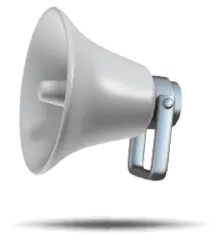According to my data, there’s nothing people hate more than receiving annoying messages at undesirable hours while they’re busy, from brands that have access to their information.
Why? Because nobody wants to feel pressured into buying.
Despite this, outbound marketing remains a powerful tool for reaching new people or upselling to your active customers. However, for this strategy to be effective, it’s crucial to avoid falling into spam practices that only generate rejection and damage your brand’s reputation.
But let’s start with the basics. What is spam and why should you avoid it?
Yes, I know you’re thinking it’s obvious, but let’s do the whole task, especially if there’s someone who hasn’t quite grasped it yet.
Spam is defined as the sending of unsolicited or irrelevant electronic messages, SMS, WhatsApp, or any other type of messages to a large number of people. These practices not only tend to annoy recipients but can also damage their perception of your brand.
So let’s talk about the solution: Hyper-segmentation
Here we go straight to the point because we understand that the problem lies in sending uninteresting messages. And yes, we also know that stores have basic segmentation, perhaps of customers, non-customers, ex-customers, among others, but they are not sufficiently customizable.
That’s why hyper-segmentation, which is a marketing technique that involves dividing your audience into increasingly smaller groups based on specific characteristics such as their interests, needs, demographic behaviors, online behaviors, among others, becomes possible.
By segmenting your audience in this way, you can create personalized and relevant messages that resonate with each group of people. This significantly increases the chances that your messages will be opened, read, and responded to, which in turn translates into more leads and sales.

Benefits of hyper-segmenting:
1. Greater engagement: Personalized and relevant messages generate more interest from your audience, allowing you to build solid relationships and customer loyalty.
2. Higher conversion rates: By sending messages that address the specific needs of each group of people, you increase the chances of them taking a desired action, such as making a purchase or subscribing to your newsletter.
3. Better ROI: A well-segmented outbound sales strategy allows you to optimize your resources and achieve a higher return on investment (ROI).
4. Improves your brand’s reputation: By avoiding spam and sending valuable messages to your audience, you are building a relationship of trust with your potential customers and improving your brand’s reputation.
How to implement hyper-segmentation in your outbound sales strategy?
Let’s review how to segment, but with some details that can make it more specific.
1. Define your target audience: You must clearly identify who you want to target, as in any sales and marketing strategy. Who are the people you want to buy your product or service? What are their interests, needs, and behaviors?
2. Collect data: Now that you know who they are, it’s time to interact with them and collect data from various sources, such as your website, social networks, CRM, and surveys.
3. Segment your audience: Use the collected data to segment your audience into smaller, homogeneous groups. You can segment by demographic factors, interests, online behaviors, purchase history, etc.
4. Hyper-segment your audience: You already have some starting points, now re-segment with more specific criteria. For example, if you already have a segment with people aged 25 to 35, now you can find out who has children and who doesn’t, to focus your sales message with a different approach.
5. Create personalized messages: Once you have your segments, create personalized messages that address their specific needs and interests. Continuing with the previous example, if you sell cars, you can now send an email with large family cars to those with children, and another with two-seat sports cars to those without.
6. Choose the right communication channels: When you hyper-segment, you’ll realize. If you find that a segment reached you through social networks, this will be the best channel. If you see that another came through a recommendation, maybe an email could be your best option.
. Measure and analyze results: It’s important to measure and analyze the results of your outbound strategy to identify what works and what doesn’t. This way, you can make adjustments and optimize your strategy for better results.
Who applies this strategy?
None other than Netflix. The streaming company uses hyper-segmentation to send personalized movie and series recommendations to each of its subscribers, based on what they have watched and the content they have added to their watchlists.
This has significantly contributed to the success of the platform, not only with content but even with the thumbnails you see in the recommendations.

Sounds complicated. Can I do it without it becoming a manual and tedious task?
The answer is a resounding yes. Today, technology has advanced enough to do all this process for you, or at least store the data you need to do it.
At Keybe, for example, our Smart Chat identifies relevant data from people in your conversations and stores it so that you can create segments according to your needs.
And if you hire me, I connect with your chat so that your customers feel in a pleasant environment to provide their data and I also identify opportunities that your sales team can take advantage of.
To conclude, remember that spam is NOT viable today, it’s an ineffective and harmful practice that you must avoid at all costs.
Are you ready to take your outbound strategy to the next level with hyper-segmentation? Contact us and we’ll help you do it with technology and empathy.
You might also be interested in:
- The key to sales? Data enrichment
- Want more sales opportunities and customer loyalty? Discover how
- No more spam! Discover the power of hyper-segmentation for your outbound strategy
- Say goodbye to manual tasks and give your sales a boost with KB: Flows
- CDP: The tool to truly know your customers for better sales
- Selling via chat with intuitive and effective AI? Yes, it’s possible with KB: Smart Chat
- Goodbye to bots! Meet Biky Greenberg and the Tesseract method
- Win over the digital customer by selling cars through chat






